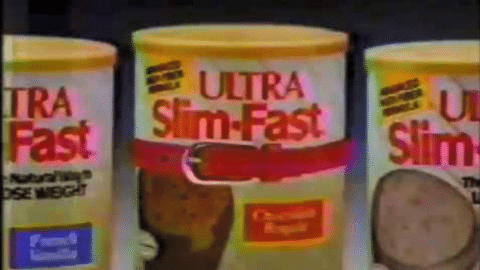7 ’70s Health Fads That We’d Never Try Today

via Chuck D's All-New Classic TV Clubhouse / YouTube
In the era of disco and bell-bottoms, the 1970s were also a time of peculiar health fads and weight loss crazes. The pursuit of wellness often took people down some bizarre paths. Here’s a list of seven health fads from the ’70s that would raise eyebrows today.
The Grapefruit Diet
View this post on Instagram
The idea was straightforward. Eat a grapefruit at every meal for 12 days, and watch the pounds drop off. This citrus-centric diet promised quick weight loss, attributing it to magical fat-burning enzymes present in the fruit. The reality, though, was a daily calorie count that plummeted to under 1,000. The grapefruit diet might have proved its effectiveness for some, owing to its drastic calorie reduction, but it wasn’t without its grumblings of hunger and nutritional imbalance.
Despite the possibility of shedding up to 10 pounds within the limited timeframe, the Grapefruit Diet’s restrictive nature meant that any lost weight was likely to return. This diet plan is a prime example of how the ’70s often favored quick fixes over sustainable health solutions.
Dexatrim
Back in the ’70s, Dexatrim sat proudly on the shelves as the go-to diet pill. Its claim to fame was its appetite-suppressing prowess, courtesy of an ingredient called phenylpropanolamine. Initially, Dexatrim gained popularity for what seemed like an easy route to weight loss. The pill promised to help people slim down without having to change their diet or lifestyle.
However, as research caught up with the supplement industry, the use of phenylpropanolamine raised safety concerns. Associated with an increased risk of strokes, it led to Dexatrim and similar diet pills being pulled from the market. This exemplifies the less-informed consumer trust in quick-fix pills of the past, something we view much more critically today.
The Sleeping Beauty Diet
As radical as it sounds, the Sleeping Beauty Diet involved sleeping for extended periods to avoid eating. The belief was that if you weren’t awake, you couldn’t consume unnecessary calories. Some individuals even went to the extreme of using sedatives to prolong their sleep cycles artificially. This method of weight loss was as unsafe as it was flawed, potentially leading to a host of health issues.
The diet became slightly infamous when it was rumored that Elvis Presley had taken a doctor’s advice to undergo a medically-induced coma to lose weight. Needless to say, sleep is essential for health, but using it as a tool to suppress natural hunger is a perilous approach that has since been disregarded.
The Cookie Diet
View this post on Instagram
Essentially the anti-thesis to most diets, the Cookie Diet was a 1970s sensation that allowed sweet treats to be on the menu. Dr. Sanford Siegal baked up the idea, producing low-calorie, hunger-controlling cookies as a meal replacement strategy. It sounded like a dream – cookies for weight loss – but the reality was another highly restrictive and unsustainable way to manage diet.
Siegal’s cookies, packed with a “secret amino acid protein blend,” were the supposed key to curbing hunger. Yet, in the long run, this peculiar dietary plan was more of a novelty than a substantial approach to nutrition and weight management.
SlimFast
Another product hitting the scene in the late ’70s was SlimFast, a powdered beverage mix intended to replace entire meals. Users would mix the powder with low-fat milk to create a shake that purportedly provided all the necessary nutrients at just 1,200 calories a day.
After a rocky start, SlimFast found its footing in the 1980s, hitting peak sales and spawning the meal replacement trend still seen today. Though it promised convenience and results, the concept of replacing whole foods with a liquid substitute raised questions about long-term health impacts and the importance of a varied diet.
The Atkins Weight Loss Method
Dr. Robert Atkins introduced a counter-intuitive weight loss method that gained fame in the ’70s: a low-carbohydrate, high-protein diet. His 1972 publication, ‘Dr. Atkins’ Diet Revolution,’ argued that cutting down on carbs while enjoying proteins and fats could lead to effective weight loss.
The Atkins Diet encouraged consumption of foods like steak, eggs, and bacon, often considered diet no-nos. Its philosophies echo in today’s popular Keto Diet, showing that while some ’70s trends faded, others evolved and adapted to contemporary nutrition science.
Jazzercise
Although not a diet, Jazzercise was a fitness movement that took the ’70s by storm. Judi Shepherd Missett created this energetic blend of jazz dance and exercise, starting with small classes that exploded in popularity.
Surprisingly resilient, Jazzercise has kept up with the times, regularly updating its routines to include other fitness trends like kickboxing. This fusion of fun and fitness is one of the enduring legacies from the ’70s that proves some health fads have the rhythm to survive the test of time.






















